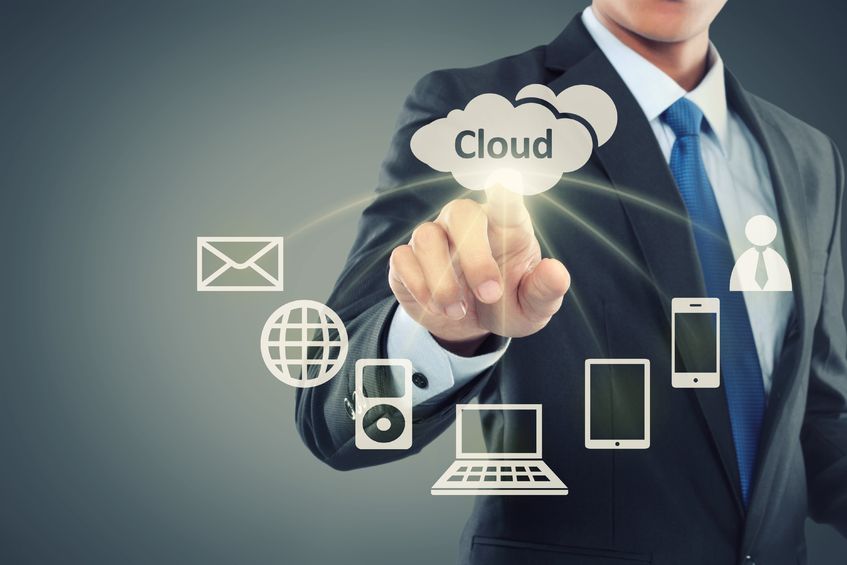Sponsored Post: Gearing up for the cloud
By Edwin Yapp January 8, 2014

 THE technology landscape has changed tremendously since the days when the mainframe reigned supreme. The first big change came in the 1980s, when the client-server model became the de facto standard in most organisations.
THE technology landscape has changed tremendously since the days when the mainframe reigned supreme. The first big change came in the 1980s, when the client-server model became the de facto standard in most organisations.
In this model, the server – which houses computing resources such as compute power, memory, disk space and storage, as well as software – ‘serves’ or shares these resources with another computer, the ‘client’ – which accesses the server to use said resources.
That stayed pretty much the standard until the last few years. Technology giants such as Amazon, Google and Microsoft, to name just a few, are now delivering such computing resources via the Internet, via what is known as ‘cloud computing.’
One can think of cloud computing as computing resources – the above compute power, memory, disk space and storage, as well as software – being offered ‘on tap’ in the same way that electricity and water comes to us in our homes and offices.
Just as how we get electricity and water by subscribing to our local power and water utility provider, we can also subscribe to cloud service providers (CSPs) and request that computing resources – compute power, memory, disk storage and software – be delivered to us over the public Internet or via a private or leased line.
Simply put, cloud computing is a new way of delivering software and IT services in today’s broadband-enabled world.
Four-letter acronyms
To understand cloud computing further, it would be necessary to define the technology in the three usual terms used in the industry to describe it: Infrastructure as a Service (IaaS), Platform as a Service (PaaS), and Software as a Service (SaaS).
IaaS means serving hardware services such as memory, compute power and storage to customers; examples of these services are Amazon EC2 and Rackspace.
PaaS delivers the same services as IaaS but have the added element of application development solution tools, so that programmers and developers can use these tools to build end-user software on top of an IaaS infrastructure; examples of these are Google App Engine and Microsoft’s Azure.
SaaS is a method of delivering software over the Internet – think of Dropbox for storage, Google Docs or Microsoft Office 365 for productivity suites, Salesforce.com for customer relationship management tools, and WebEx for online collaboration tools.
Collectively, these three models define what is commonly known as cloud computing.
 Benefits of the cloud
Benefits of the cloud
There are many benefits to cloud computing, and one of the most attractive is the cost-savings it can bring users.
If you are a startup company which wants to build a business but cannot invest heavily on IT infrastructure, you can rent from these CSPs, instead of setting aside money to buy your own IT infrastructure.
Because you’re buying these services, you can also park these payments as part of your operational expenditure, which is tax deductible, rather than as capital expenditure, which is not.
This model also benefits small software application developers and small and medium businesses for the same reasons.
Additionally, a user or company does not need to have the expertise to handle IT infrastructure, as these technical tasks are taken care of by the CSP and not the user organisation.
This means that you would not have to handle issues like software and server upgrades, which is very handy for any business not familiar with such matters.
Next, being on the cloud allows you to access your data and applications virtually from anywhere, anytime, and from most devices in the market today. This is a plus point because a lot of workers in today’s world are mobile and they need access to their data on the go.
Another big advantage of the cloud is that it is ‘elastic’ or ‘burstable’ in its capacity. What this means is that you can get more resources from your CSP without having to worry about whether the infrastructure has the capacity to do so, or whether you have to make significant capital investment to boast resources just for a short period of time.
For example, if you are an online retailer, you can ask for more capacity during a designated sales period, when you would expect more online transactions taking place compared with a lull period, when you will not need so much capacity.
Best practices, cautions
While there are undeniably great advantages to cloud computing services, there is probably one main impediment that may be holding back the adoption of cloud computing in Malaysia – security and privacy, collectively.
Because you are essentially using someone else’s IT infrastructure, your data and applications are being stored and processed by these CSPs. Should there be any downtime, your business could be affected.
Many people are unsure about how CSPs work and while they acknowledge the advantages the cloud brings them, their uncertainties about privacy and security cause them to shy away from adopting cloud computing.
To safeguard yourself, you will need to scrutinise the document known as a service level agreement (SLA), which is provided by your CSP. The SLA spells out all the relevant terms and conditions that govern the service you are leasing from the CSP. This includes relevant clauses on security, privacy and recovery from outages.
When selecting your CSP, you will also need to enquire as to what its policies are with regard to integrating with your existing IT environment: Portability and lock-in issues, for example, or whether you can swiftly migrate your data to another CSP should you want to switch CSPs.
Then there is data governance: What happens to your data when you decide to terminate your services with your CSP? Will it destroy your data completely? And how long will it keep the data for?
For those wanting to try out cloud computing, it’s best to do so in stages. You could, for example, try moving non-core IT systems towards the cloud and see how such a move pans out, before migrating other more important computing systems.
One other important note: As cloud computing is about accessing your data and applications from remote locations, you would have to ensure that your underlying Internet network infrastructure has the right reliability, consistency and the correct performance parameters to support your cloud computing services.
A fibre-based system would be ideal to suit your connectivity needs, as it is the most reliable, robust and resilient network there is today, although other forms of broadband systems could also be used.
At the end of the day, your network is only as good as your weakest link, and this means that you would have to ensure that your broadband service provider also meets the necessary SLAs to ensure that your business runs smoothly.


